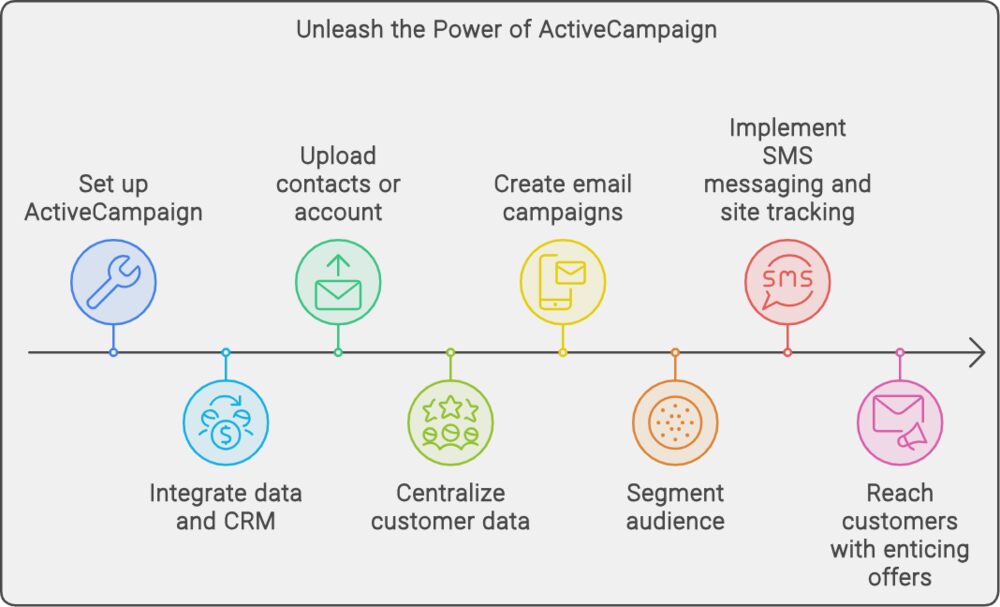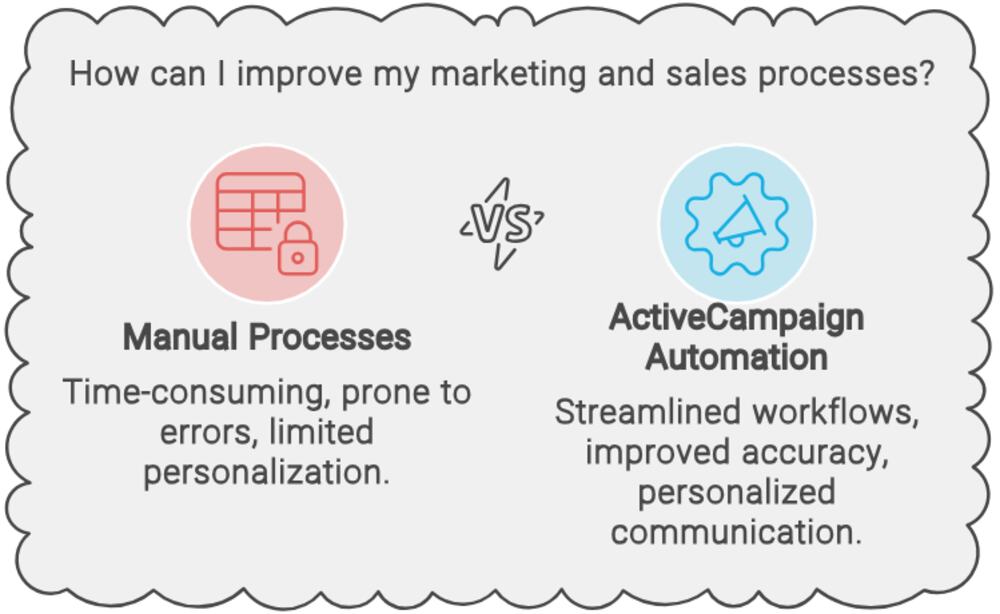Why Lead Nurturing is Important
Lead nurturing has emerged as a pivotal strategy for achieving sustainable growth and driving revenue. At its core, lead nurturing is the art of carefully cultivating relationships with potential customers throughout their journey in the sales funnel.
Rather than focusing solely on lead generation and customer acquisition, businesses now realize that maintaining existing customer relationships is equally crucial. One key reason why lead nurturing has gained such significance lies in understanding the customer lifecycle.
The journey from initial awareness to final purchase involves multiple touchpoints and interactions with a brand. By implementing effective lead nurturing strategies, businesses can guide potential customers through each stage of this journey, increasing their chances of converting leads into loyal customers.
Lead nurturing also plays a vital role in building long-lasting relationships with prospects. In today’s content-driven world, where consumers have access to an abundance of information at their fingertips, businesses need to establish trust and credibility to differentiate themselves from competitors.
Through personalized communication and targeted content marketing efforts, companies can nurture leads by providing valuable information that addresses their pain points and establishes the brand as a trusted authority within the industry. Furthermore, lead nurturing can prove advantageous in terms of cost savings.
While many organizations allocate significant resources toward attracting new leads through various marketing channels, neglecting existing leads can be detrimental to overall efficiency and effectiveness.
By investing in a robust lead nurturing strategy that focuses on retaining and converting leads already within your pipeline, businesses can make the most out of their marketing investments while reducing acquisition costs.
Lead nurturing occupies a critical role in modern-day business growth strategies. By recognizing the value of maintaining relationships throughout the customer journey, businesses can effectively guide leads toward conversion while building trust and credibility along the way.
Moreover, by focusing on existing leads instead of solely chasing new prospects, companies can optimize their resources while maximizing returns on investment. In subsequent sections of this article, we will delve deeper into strategies for creating an effective lead nurturing plan, from defining your goals to tracking results and beyond.
Lead Nurturing Increases Your Chances of Converting Leads into Customers
By implementing an effective lead nurturing strategy, businesses can strategically nurture leads and guide them through the various stages of the customer lifecycle.
At the heart of lead nurturing, understanding the needs and interests of each lead allows businesses to tailor their communications accordingly. This process involves lead scoring and lead qualification techniques to segment leads based on their level of engagement, demographics, and behavioral patterns.
By identifying high-potential leads who have demonstrated a genuine interest in your products or services, you can allocate your resources more efficiently and focus on those who are most likely to convert. One effective method for nurturing leads is through email marketing campaigns.
By delivering personalized content directly to prospects’ inboxes, businesses can provide value-added information that aligns with their interests and pain points. These emails may include educational resources such as blog posts, whitepapers, or ebooks that address specific challenges faced by your target audience.
Additionally, inviting leads to participate in webinars or exclusive events can further engage them while positioning your brand as a trusted authority within your industry. It’s important to recognize that not all leads are ready for immediate conversion at any given time.
Lead nurturing acknowledges this reality by providing relevant touchpoints throughout the customer journey. By consistently delivering valuable content and engaging with prospects at different stages of their decision-making process, you build trust and credibility over time – ultimately increasing the likelihood of converting these nurtured leads into paying customers.
Effective lead nurturing significantly enhances a business’s ability to convert potential clients into loyal customers. Through strategies like email marketing campaigns and personalized content delivery, companies can engage prospects throughout their customer lifecycle while addressing their specific needs and concerns dynamically.
By investing time in understanding each lead’s unique requirements through techniques like lead scoring and qualification, businesses can optimize their resources and yield greater returns on their marketing efforts. Ultimately, the benefits of successful lead nurturing extend beyond just customer acquisition, as it also contributes to customer retention and advocacy in the long run.
Lead Nurturing Builds Relationships with Leads and Turns Them into Advocates for Your Brand
It is not enough to generate leads and hopes for them to convert into customers. One must understand the significance of building relationships with leads through effective lead-nurturing strategies.
Lead nurturing is a crucial element in the sales funnel as it involves engaging and nurturing leads at various stages of their customer journey. One way in which lead nurturing builds relationships with leads is by providing relevant and valuable content that addresses their needs and pain points.
By understanding your leads’ challenges, you can tailor your content marketing efforts to provide them with information that genuinely helps them overcome obstacles or achieve their goals. This can be done through various channels such as blog articles, whitepapers, webinars, or even personalized email marketing campaigns.
By consistently delivering high-quality content, you position yourself as an authoritative source in your industry and establish trust with your leads. Furthermore, lead nurturing allows you to stay top-of-mind with your prospects throughout the customer lifecycle.
By maintaining regular communication and delivering value-added content, you ensure that your brand remains relevant even after the initial contact. This helps nurture relationships over time and keeps potential customers engaged until they are ready for conversion.
By engaging leads at different points in their customer journey, you have the opportunity to guide them towards becoming advocates for your brand. By cultivating strong relationships through lead nurturing efforts, businesses can turn satisfied customers into loyal advocates who not only make repeat purchases but also actively promote your brand within their networks.
Satisfied customers are more likely to refer others who may benefit from your products or services, thus aiding in customer acquisition. Through effective lead scoring and qualification techniques during the lead nurturing process, businesses can identify those highly engaged prospects who are most likely to become long-term advocates for their brand.
Successful lead nurturing strategies focus on building relationships with leads throughout their customer journey by providing valuable content tailored to their needs. By doing so, businesses can establish trust, stay top-of-mind, and ultimately turn leads into brand advocates.
This approach not only increases customer retention but also aids in customer acquisition through satisfied customers who actively promote your brand. Lead nurturing plays a pivotal role in developing meaningful connections with potential customers and should be an integral part of any comprehensive marketing strategy.

Lead Nurturing Saves You Money on Marketing Costs
Lead nurturing is not only beneficial for building relationships and increasing conversion rates but also for saving money on marketing costs. This aspect of lead nurturing is often overlooked but holds immense significance in the overall marketing strategy of any business.
By implementing effective lead nurturing techniques, businesses can significantly reduce their customer acquisition costs and optimize their marketing efforts. One way lead nurturing saves you money on marketing costs is by maximizing the potential of your existing leads.
Instead of constantly focusing on generating new leads through costly methods like advertising or lead generation campaigns, a well-implemented lead nurturing strategy allows you to cultivate relationships with your current leads and guide them through the customer journey. By providing valuable content tailored to their needs, interests, and pain points, you enhance their engagement and move them closer to making a purchase.
This targeted approach helps you make the most out of your existing leads without constantly investing in new customer acquisition efforts. Email marketing plays a vital role in cost-effective lead nurturing strategies.
By leveraging automated email workflows, businesses can deliver personalized content directly to their leads’ inboxes at strategic touchpoints along the customer lifecycle. These emails can include educational materials, exclusive offers, or updates about relevant products or services.
Not only does this save money compared to traditional direct mail campaigns but it also enables businesses to nurture multiple leads simultaneously without requiring significant resources. Additionally, by utilizing webinars as a part of your lead nurturing strategy, you can showcase your expertise while engaging with a large audience at once.
Webinars provide an excellent platform for delivering valuable insights and addressing common pain points faced by your target audience. They not only allow you to establish yourself as a thought leader in your industry but also enable you to nurture multiple leads simultaneously without drastically increasing your marketing expenses.
Overall, integrating cost-effective tactics such as email marketing automation and webinars into your lead nurturing strategy helps optimize your marketing budget by focusing on cultivating relationships with existing leads rather than solely relying on costly customer acquisition methods like advertising.
By investing in lead nurturing, businesses can achieve higher conversion rates, increase customer retention, and ultimately maximize their return on investment.
How to Create a Lead Nurturing Strategy
A well-crafted lead nurturing strategy is crucial for businesses aiming to maximize their customer acquisition efforts and drive sustainable business growth. To create an effective lead nurturing strategy, several key steps must be taken. First and foremost, it is essential to define your goals clearly.
Determine what specific outcomes you want to achieve through your lead nurturing efforts. Are you looking to increase conversions, improve customer retention, or boost overall sales?
By setting clear objectives, you can tailor your strategy to align with these goals and measure its effectiveness accurately. Identifying your leads is the next critical step in crafting a successful lead-nurturing strategy.

Understanding where your leads are in the customer lifecycle or journey allows you to tailor your approach accordingly. Segmenting leads based on their level of interest or engagement enables personalized content marketing efforts that resonate with each segment’s needs and preferences.
This can be achieved through various methods, such as lead scoring and qualification techniques, ensuring that the right messages are delivered at the right time. Once you have identified your leads, creating a comprehensive content plan becomes paramount.
Content marketing plays a vital role in nurturing relationships with leads by providing relevant and valuable information throughout their buying process. Consider incorporating various content formats such as blog posts, whitepapers, videos, webinars, or case studies that cater to different stages of the customer journey.
By delivering targeted content that addresses specific pain points or challenges faced by potential customers, you can establish yourself as an industry authority while simultaneously guiding leads toward conversion. In addition to content creation, utilizing email marketing campaigns can significantly enhance your lead nurturing efforts.
By designing personalized email sequences triggered by specific actions or milestones achieved by leads, businesses can maintain regular communication while gently nudging prospects toward making purchasing decisions. These emails should be informative yet persuasive without being overly sales-oriented.
By following these steps in creating a well-rounded lead nurturing strategy encompassing defined goals, effective lead identification and segmentation techniques, diverse content marketing approaches tailored for each stage of the customer journey, and well-crafted email campaigns, businesses can foster long-term relationships with their leads.
Such an approach not only increases the chances of converting leads into customers but also strengthens customer retention rates, ultimately contributing to sustainable business growth.
Define Your Goals
Defining your goals is a crucial step in creating an effective lead-nurturing strategy. Without clear objectives, it becomes challenging to measure the success and effectiveness of your efforts.
The first goal of lead nurturing is typically focused on customer acquisition, where you aim to convert leads into paying customers. This involves moving leads through the various stages of the sales funnel until they are ready to make a purchase.
To define your goals effectively, start by identifying the desired outcomes you want to achieve with your lead nurturing campaign. For example, you might want to increase conversion rates, improve customer retention rates, or shorten the customer lifecycle.
Once you have identified these primary objectives, break them down into specific and measurable targets. This could include metrics like increasing email open rates by 20%, generating a certain number of qualified leads within a specific timeframe, or boosting overall revenue by a certain percentage.
Additionally, consider incorporating lead scoring into your goal-setting process. Lead scoring allows you to prioritize and categorize leads based on their level of interest and engagement with your brand.
By assigning scores based on actions such as website visits, email clicks, or webinar attendance, you can focus your efforts on nurturing those leads that are most likely to convert into customers. Ultimately, defining your goals will help shape your lead nurturing strategy and guide its execution.
It provides clarity and direction while allowing you to monitor progress and make necessary adjustments along the way. Keep in mind that goals should be realistic yet ambitious enough to drive continuous improvement in your marketing efforts.
Defining clear and measurable goals is essential for an effective lead nurturing strategy. By focusing on customer acquisition through targeted content marketing efforts and implementing tools like lead qualification and scoring techniques, businesses can navigate their prospects through the various stages of the sales funnel more efficiently.
Setting specific targets enables companies to track their progress accurately and make data-driven decisions about their lead nurturing campaigns’ optimization. Lead generation is just one part of the equation; lead nurturing is what ultimately drives conversions and customer loyalty.
By defining your goals, you can align your efforts with your desired outcomes and create a solid foundation for a successful lead-nurturing strategy. Remember, it is all about understanding the needs of your leads, providing valuable content at every step of their customer journey, and continually optimizing your approach to foster long-term relationships with customers.
Identify Your Leads
To effectively nurture your leads, it is crucial to first identify who they are. Understanding the characteristics and preferences of your potential customers enables you to tailor your lead nurturing efforts to their specific needs.
One important aspect of identifying leads is lead scoring, a methodology used to rank prospects based on their level of engagement and likelihood of conversion. To identify your leads, start by assessing the information you already have about them.
This could include data from previous interactions, website analytics, social media engagement, or even surveys and forms that prospects have filled out. By analyzing this information, you can gain insights into their demographics, interests, and behavior patterns.
Another valuable approach for lead identification is segmenting your leads based on different criteria such as industry, job title, or geographic location. This allows you to create personalized campaigns that resonate with specific segments of your target audience.

Segmenting leads helps you prioritize your efforts by focusing on those who are most likely to convert. Once you have identified your leads and segmented them accordingly, it becomes easier to align your lead nurturing strategies with each stage of the customer journey or lifecycle.
For example, if a lead is in the early stages of awareness and discovery about your product or service, you may want to focus on providing educational content through webinars or blog posts. On the other hand, if a lead has shown strong interest and is closer to making a purchase decision, personalized email marketing campaigns tailored toward addressing any remaining objections might be more effective.
By investing time in identifying and understanding your leads’ preferences and behaviors through thorough lead qualification processes and data analysis techniques like lead scoring and segmentation;
Businesses can significantly enhance their ability to nurture relationships throughout the customer acquisition process while increasing both customer retention rates and revenue growth potential. (Note: Please remember that this AI-generated content aims at providing helpful information but should still be reviewed/checked by an expert in the field before publishing.)
Create a Content Plan
Creating a Content Plan When it comes to effective lead nurturing, crafting a well-thought-out content plan is of paramount importance.
A robust content strategy helps guide your efforts in delivering valuable and relevant information to your leads at each stage of the customer lifecycle. By tailoring your content to align with their needs and interests, you can effectively move them through the sales funnel and increase their likelihood of conversion.
To develop an effective content plan, start by identifying the different stages of your lead generation process. Consider how prospects interact with your brand from initial awareness through to becoming loyal customers.
This understanding will enable you to create targeted content that addresses their specific pain points, offers solutions, and positions your brand as a trusted authority in the industry. Incorporating various forms of content marketing into your strategy can significantly enhance lead-nurturing efforts.
For instance, blog posts can serve as educational resources that draw in potential leads while establishing credibility within your niche. Webinars or online events provide an interactive platform where you can engage with leads directly, share valuable insights, and establish personal connections.
Ebooks or whitepapers offer in-depth knowledge that demonstrates expertise while capturing leads’ contact information for further nurturing. An essential aspect of creating a successful content plan is ensuring consistency across all channels.
Whether it’s email marketing campaigns or social media posts, maintaining a coherent message throughout the customer journey fosters trust and familiarity with your brand. Furthermore, consider implementing lead-scoring techniques that help prioritize prospects based on their engagement level with different types of content.
By tracking these interactions, you can tailor future communications to individual preferences and move leads closer to conversion. Developing a comprehensive content plan plays a crucial role in effective lead-nurturing strategies.
By understanding the stages of the customer journey and aligning your content with their needs at each step along the way, you can build trust, establish thought leadership, and ultimately guide leads toward becoming loyal customers. Through various forms of content marketing, consistent messaging, and lead-scoring techniques, you can create a targeted approach that maximizes the potential for customer acquisition and retention.

Track Your Results
Track your results to ensure the effectiveness of your lead nurturing efforts, it is crucial to track and analyze your results. Tracking allows you to gain valuable insights into the performance of your lead nurturing campaigns, enabling you to make data-driven decisions and optimize your strategies.
By monitoring key metrics and analyzing various aspects of your lead nurturing process, you can identify what works well and what needs improvement. One important element to track is the progress of leads through the sales funnel.
This involves monitoring the movement of leads from one stage to another and evaluating their engagement levels at each touchpoint. By understanding how leads interact with your content and offer at different stages, you can refine your lead scoring and qualification processes accordingly.
Tracking conversion rates at each stage enables you to identify potential bottlenecks or areas where leads may drop off, allowing for targeted intervention. Moreover, tracking helps measure the impact of lead nurturing on customer acquisition and overall business growth.
By analyzing data related to qualified leads that converted into customers as a result of effective nurturing efforts, you can determine the return on investment (ROI) generated by your marketing initiatives. This allows for better resource allocation and budget optimization.
To effectively track results, leveraging marketing automation tools can be immensely beneficial. These tools enable detailed tracking of email marketing campaigns, website interactions, content engagement metrics, webinar attendance rates, and other relevant factors throughout the customer journey.
By integrating these metrics into a centralized dashboard or CRM system, marketers gain a comprehensive view of their lead nurturing performance. Tracking results plays a pivotal role in optimizing and refining your lead nurturing strategy for business growth.
By closely monitoring key metrics such as conversion rates within the sales funnel, customer acquisition influenced by nurtured leads, and utilizing marketing automation tools for comprehensive data analysis; businesses can make informed decisions that drive success in both lead generation and customer retention efforts.
Remember that effective tracking goes beyond merely collecting data – it empowers you to understand the nuances of your target audience’s behavior and tailor your lead nurturing approach accordingly.
Conclusion
Lead nurturing is an essential strategy for businesses seeking sustainable growth and long-term success. Through effective lead nurturing, businesses can optimize their marketing efforts, increase customer retention rates, and ultimately drive revenue growth.
By understanding the significance of building relationships with leads throughout the customer journey, companies can better align their marketing and sales efforts to meet the needs of their target audience. One of the key benefits of lead nurturing is its ability to enhance customer acquisition.
By strategically engaging with leads through personalized content and tailored communication channels such as email marketing campaigns, businesses can effectively guide potential customers through the sales funnel. This process enables them to deliver relevant information and valuable insights that address the pain points and desires of their leads.
Moreover, by utilizing techniques like lead qualification and scoring, businesses can identify high-value prospects more efficiently, ensuring that their resources are allocated towards those most likely to convert. Furthermore, lead nurturing plays a crucial role in fostering long-term customer relationships.
Through ongoing engagement and providing valuable educational content across various touchpoints, businesses have an opportunity to establish themselves as trusted advisors in their respective industries.
By offering webinars or hosting virtual events on topics that align with their target audience’s interests, companies can position themselves as thought leaders while simultaneously addressing any knowledge gaps or concerns potential customers may have.
A well-executed lead nurturing strategy also contributes significantly to cost savings for businesses by maximizing marketing efficiency. Instead of focusing solely on acquiring new leads through expensive advertising initiatives or other forms of outbound marketing methods, attention is shifted toward building lasting relationships with existing leads.
This approach reduces reliance on continuous lead generation efforts while increasing overall conversion rates. Implementing a comprehensive lead nurturing strategy within your business operations is a game-changer when it comes to driving growth and achieving sustainable success.
By recognizing the significance of delivering personalized content throughout the customer lifecycle and maintaining consistent engagement with leads over time, companies have a higher chance of converting prospects into loyal customers. In today’s competitive market, where customer attention is divided and acquisition costs are rising, effective lead nurturing can be the differentiating factor that propels your business forward.
Lead Nurturing is a Long-Term Strategy for Building Relationships with Leads and Turning Them into Customers
Lead nurturing is an integral part of a successful long-term strategy for building relationships with leads and ultimately converting them into loyal customers. In today’s competitive business landscape, simply generating leads is not enough; businesses must be proactive in cultivating these leads throughout the entire customer lifecycle.
By implementing effective lead nurturing techniques, businesses can strategically guide prospects through the sales funnel, ensuring that they stay engaged and informed at each stage of their customer journey.
One key aspect of lead nurturing is the utilization of content marketing. Providing valuable and relevant content to your leads is crucial for keeping them engaged and moving them further down the sales funnel.
This can take the form of blog posts, whitepapers, e-books, webinars, or email newsletters that address their pain points and offer solutions. By consistently delivering high-quality content that resonates with your target audience, you establish yourself as a trusted authority in your industry and build credibility among potential customers.
Another important element in lead nurturing is lead qualification and scoring. Not all leads are created equal; some may be more ready to make a purchasing decision than others.
Lead scoring allows businesses to prioritize their efforts by assigning numerical values to individual leads based on factors such as engagement level, demographics, or actions taken on their website. By conducting comprehensive lead qualification processes and effectively scoring your leads’ readiness to purchase, you can tailor your marketing messages accordingly and focus your resources on those most likely to convert.
Personalized email marketing campaigns play a vital role in nurturing leads over time. Customizing messages based on specific segments or individual preferences helps establish a deeper connection with your audience by providing relevant information when they need it most.
Automated email workflows enable businesses to deliver timely messages at certain milestones or triggers along the customer journey while saving time and effort. Implementing an effective lead nurturing strategy is paramount for building strong relationships with prospects while guiding them toward becoming valuable customers.
By utilizing content marketing techniques tailored to their needs and interests, conducting thorough lead qualification processes, and implementing personalized email marketing campaigns, businesses can cultivate a loyal customer base and increase their chances of long-term success in an increasingly competitive market.
Remember, lead nurturing is not a one-time effort; it requires ongoing dedication and optimization to ensure that your leads receive the attention they deserve throughout their buyer’s journey.
Start Nurturing Your Leads Today
As we have explored throughout this comprehensive article on the importance of lead nurturing for business growth, it is evident that a well-executed lead nurturing strategy can significantly impact your bottom line. Now that we have delved into the various aspects of lead nurturing, it is time to put theory into action and start nurturing your leads without delay.
To embark on your lead nurturing journey, you must first understand the importance of maintaining consistent communication with your leads. Email marketing campaigns serve as a powerful tool for staying connected with potential customers throughout their customer lifecycle.
Through personalized and targeted emails, you can provide valuable information regarding your products or services, educate them about industry trends, or offer exclusive promotions. By strategically leveraging email marketing in your lead nurturing efforts, you can guide prospects along their customer journey and keep them engaged with your brand.
Another effective method to engage leads and foster meaningful relationships is through hosting webinars or online events. These interactive platforms allow you to deliver engaging content directly to your target audience while simultaneously showcasing expertise in your industry.
Webinars not only attract new leads but also provide a valuable opportunity to nurture existing ones by offering educational sessions tailored to their specific needs. By inviting qualified leads to participate in these webinars and providing them with actionable insights or solutions to their pain points, you solidify yourself as a trusted partner in their journey toward finding the right solution.
Email marketing webinars and content marketing play a pivotal role in sustaining long-term relationships with potential customers. Creating relevant and informative content such as blog articles, videos, whitepapers, or case studies positions you as a thought leader within your industry while simultaneously addressing common challenges faced by prospects.
By consistently delivering high-quality content tailored to different stages of the sales funnel, you establish credibility and trust among leads who are actively seeking information or solutions. Incorporating lead scoring and qualification techniques into your content marketing strategy enables you to prioritize leads based on their level of interest and engagement, thus streamlining the nurturing process and maximizing your conversion rates.
The importance of lead nurturing for business growth cannot be overstated. By proactively engaging with your leads through targeted email marketing campaigns, interactive webinars, and valuable content, you lay the foundation for long-term customer acquisition, retention, and advocacy.
Investing in a comprehensive lead nurturing strategy ensures that you stay top-of-mind with potential customers, guide them through their customer journey, and ultimately convert them into loyal advocates for your brand. So don’t wait any longer – start nurturing your leads today and unlock the full potential of your business.





















